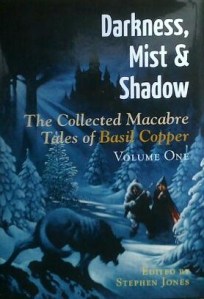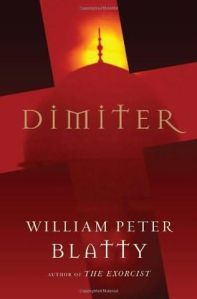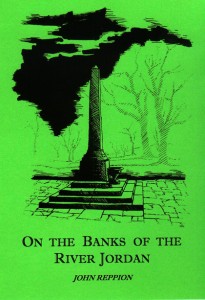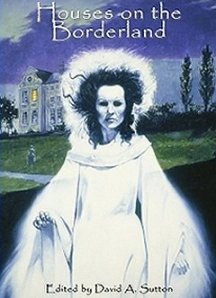
Darkness, Mist and Shadow: The Collected Macabre Tales of Basil Copper
Edited by Stephen Jones
Published by PS Publishing, 2010
Every now and then a book is published which defines the Horror genre. A book which transcends normal publishing to become a landmark. PS Publishing’s mammoth collection of Basil Copper’s short stories is just such an occasion. Of course such an important book demands a thorough review by an expert and who better than Johnny Mains. Regular readers will know that Johnny recently published Back From The Dead: The Legacy Of the Pan Book Of Horror Stories and mighty impressive it was too. His knowledge of the Pan Horror books and the contributors who appeared within those pages (including Basil Copper) is second to none. I was delighted, therefore, that Johnny agreed to review the book and it is a pleasure and honour to feature him on these pages.
********
Darkness Mist and Shadows: The Collected Macabre Tales of Basil Copper reviewed by Johnny Mains
Basil Copper – a gentle soul with the gift to terrify. For the last fifty years, since his first short story was published in the Pan Book of Horror Stories, his macabre writings have stood alongside the best work of his contemporaries – and this achievement has been recognised by PS Publishing who have brought out the two volume behemoth that is Darkness, Mist and Shadow: The Collected Macabre Tales of Basil Copper.
These two books, the first with an introduction from Stephen Jones, and the second a critical assessment from Kim Newman bring together every macabre and supernatural story Basil has ever written – from the well known to the privately printed. While Basil freely admits he is all written out, his legacy is assured.
Standout stories from volume one: ‘Camera Obscura’, arguably one of the greatest short macabre stories ever written by a British author – depicting the punishment Mr Gringold bestows upon moneylender Mr Sharsted. This story was also taken up by Rod Serling and filmed for his series Night Gallery (Series 2 of NG is now available to buy). ‘The Academy of Pain’, a cruel revenge classic where Carstairs who collects torture implements discovers his wife is having an affair. ‘Amber Print’ is a breathtakingly brilliant story concerning the film Das Kabinet Des Dr. Caligari – where two collectors locate an extremely rare version of the film and as the story unfolds it’s clear to both men that they wish they hadn’t. Basil himself is a dedicated cinephile – and his passion for Caligari jumps out of the page and the story is not easily forgotten. Other stories of note include the Black Magic magnum opus ‘The Great Vore’, ‘The Flabby Men’ and the Lovecraftian and terrifying ‘Shaft Number 247’ which originally appeared in Ramsey Campbell’s New Tales of the Cthullu Mythos.
From the copyrights page it is clear to see that apart from Herbert van Thal, editor of the Pan Book of Horror Stories, and who first published him – the champion of Basil’s early work rests squarely on the shoulders of Peter Haining. It was certainly Haining, while working at NEL who brought out Basil’s first collection Not After Nightfall and published stories such as ‘The Academy of Pain’, ‘Dr Porthos’ and ‘Amber Print’ in his own anthologies.
August Derleth must also get a mention here too – his publishing company Arkham House bringing out two sublime collections From Evil’s Pillow plus And Afterward The Dark .
Volume Two of Darkness, Mist and Shadow may contain stories by Basil that are not as familiar, but by no means less powerful. My favourite of these come from the privately printed Knife in the Back – a book with a print run of 150. I’ve been lucky enough to own a copy of Knife for the past couple of years and can say without hesitation that while ‘Camera Obscura’ may be his greatest piece of short fiction, his second is ‘The Silver Salamander’. Compton is rich, successful and is having an affair with Joyce Appleyard. He buys her a very expensive antique bracelet in the form of a salamander as a small gift. But that doesn’t stop him from having serious stomach pains, and he goes to see his specialist who tells him an operation is needed. At the hospital he sees that the person carrying out the operation will be a certain Dr. Appleyard…
The reason I love this story so much is that you think it’s going to be a classic revenge tale – and it is, kind of… but Basil pulls the rug out from under your feet – and it’s a neat trick and satisfyingly rounds off a brilliant collection which also includes ‘When Greek Meets Greek’, ‘Out There’ and ‘Death of a Nobody’.
As much as Peter Haining was Basil’s ‘champion’ in the first volume – the accolades must fall on to Stephen Jones who has singlehandedly made sure that Basil’s work from his later period appeared in anthologies such as Mammoth Book of Frankenstein, Shadows Over Innsmouth, Mammoth Book of Dracula, Dark Terrors 6 and Don’t Turn Out the Light. In 2008 Jones edited a bio-bibliography on Basil called Basil Copper: A Life in Books with PS Publishing – and it is clear to see the respect and affection that Jones has for Basil. And when Basil said he always wanted to see his macabre short fiction appear together, Jones approached PS who thankfully agreed.
The books are supplemented with sumptuous illustrations from Les Edwards, Bob Eggleton, Dave Carson, Allen Koszowski, Randy Broecker and Gary Gianni. The cover art to both books are by Stephen E. Fabian.
A considered purchase, yes, but a purchase that will reward you with every story you read. If you are a fan of Basil Copper – these books are a welcome addition to any collection and if you are discovering Basil Copper for the first time, what are you waiting for? Buy the books now before they become extremely sought after collectibles.
Rating 5/5
Darkness, Mist & Shadow – The Collected Macabre Tales of Basil Copper [Vol 1]
Edited by Stephen Jones
Publication date: April 2010
Price £35.00
Jacketed Hardcover
ISBN: 978-1-848630-67-3
Darkness, Mist & Shadow – The Collected Macabre Tales of Basil Copper [Vol 2]
Edited by Stephen Jones
Publication date: April 2010
Price: £35.00
Jacketed Hardcover
ISBN: 978-1-848630-68-0
Darkness, Mist & Shadow – The Collected Macabre Tales of Basil Copper [Volumes 1 & 2 Deluxe Set]
Edited by Stephen Jones
Publication date: April 2010
Price: £100.00
ISBN: 978-1-848630-69-







